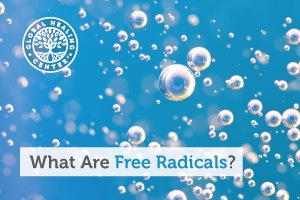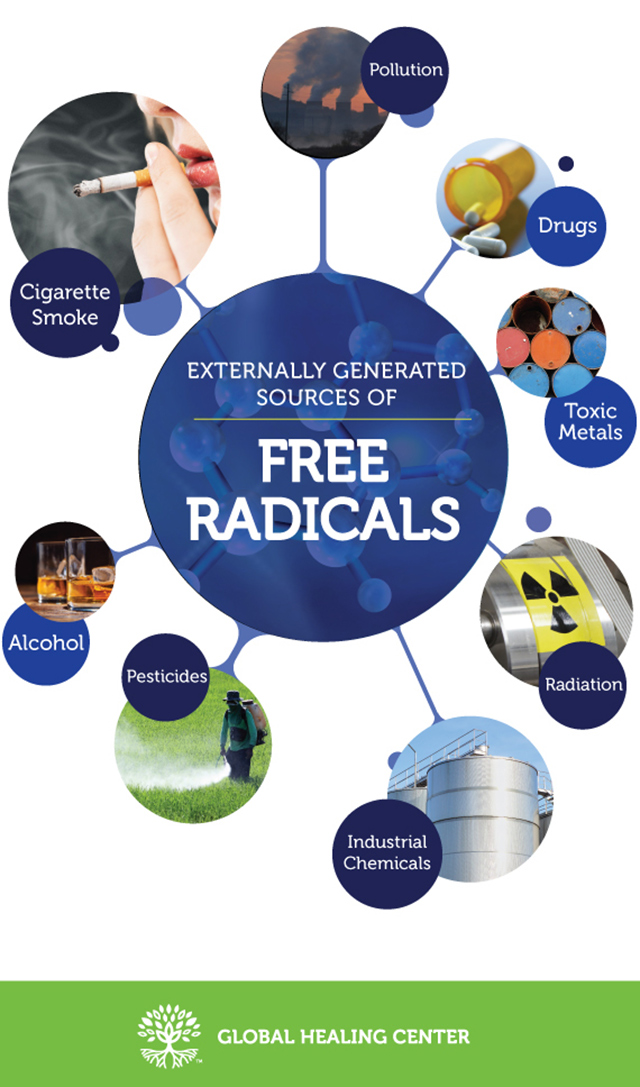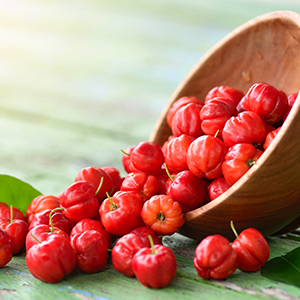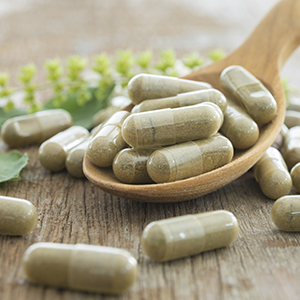
You don’t have to look at many health food advertisements to see how many marketing messages focus on antioxidants and free radicals. Free radicals are depicted as a cause of human aging and disease while antioxidants are the ultimate defense.
Although the ad wizards sometimes exaggerate the truth, free radicals do, in fact, corrupt important molecules like DNA, and antioxidants do reduce the damage they cause.
Your cell's mitochondria release energy that they obtain from molecules in your food, but they also unleash electron-stealing free radicals — like reactive oxygen species (ROS) and reactive nitrogen species (RNS). Fortunately, antioxidants "scavenge" or counteract free radicals and prevent them from causing further damage. So where do you find those antioxidants and what do they do? Read on!
The effects of long-term, free radical damage (also called oxidative damage) lead to aging — at least according to the mitochondrial theory of aging, also called the free radical theory of aging. Simply put, it says that free radical stress to your cells causes aging.
The theory also asserts that free radicals damage mitochondrial DNA frequently and, over time, the damage accumulates. This regular "wear and tear" on the genetic code slows the functioning of your mitochondria. When the mitochondria don't function normally, the cell doesn't receive the energy it requires. Ultimately, the operation of the cell as a whole is affected. When this happens in millions upon millions of cells, the organism itself — which could be you — ages. Biological functions begin to diminish.
The upside is that you can reduce free radical damage. Let’s explore free radicals, how they affect us, and their relationship with antioxidants.
What Are Free Radicals?
Free radicals are atoms, ions, or molecules that contain an unpaired electron. The unpaired electron makes them unstable and highly chemically reactive.
In a process called oxidation, free radicals steal electrons from other molecules — fats, proteins, cell membranes, and even DNA — altering the fundamental structure of the affected molecule.
One unbalanced molecule may not sound like a major concern, but oxidation sets off a chain reaction by damaging a cell’s DNA, structure, and ability to function. Over time, oxidative damage accumulates and contributes to aging and a variety of degenerative diseases.[1]
Where Do Free Radicals Come From?
There are many types of free radicals, but when we discuss them in a health capacity, we’re often referring to those that contain oxygen in the molecule, known collectively as reactive oxygen species (ROS).
Oxygen is an essential element for life, and every cell in your body requires it for cellular metabolism (this is, ultimately, the same thing that you refer to as your body's metabolism). During cellular metabolism, cells use oxygen to convert food into a form of energy the body can use, called ATP. Free radicals form naturally as a byproduct of your normal cellular metabolism, but the problem arises when your body's natural ability to break them down can't keep up.[2]
Cellular metabolism is not the only source of free radicals. Free radicals also generate and are generated by inflammation, illness, stress, and aging.[3] Hazardous environmental sources such as pollution, heavy metals and other toxins, alcohol, cigarette smoke, radiation, industrial chemicals, and medications expose us to free radicals.[1]
Completely avoiding free radicals is neither possible nor desirable. At low concentrations, free radicals are beneficial to the human body. Your immune system uses them to help defend itself against pathogens (harmful organisms).[4]
As in all things, however, proper balance is critical and concerns begin when free radicals are wildly out of balance. When free radicals overwhelm your body, it leads to oxidative stress.

What Is Oxidative Stress?
Oxidative stress is the damage that results from an imbalance between free radicals and your body’s store of antioxidants. As mentioned, organisms age because of accumulated free radical damage to cells and DNA. Cumulative damage to cell components and connective tissue leads to wrinkles, decreased physical capability, and increased susceptibility to disease.[5]
Though the free radical theory of aging remains controversial, the main concept that oxidative stress contributes to degenerative conditions such as arthritis, heart disease, hypertension, Alzheimer's disease, Parkinson's disease, muscular dystrophy, and more is scientifically well-accepted.[1]
The Power of Antioxidants Against Free Radicals
Free radicals forage through your body looking for electrons to steal (or give away) and they aren't picky. They have to have pairs of electrons in order to be stable and they frantically seek molecules to achieve this. Free radicals will take (or leave) an electron, whether it's available or not, including those in fragile DNA molecules, proteins, and fats.
Antioxidants help. They stop free radical damage to molecules[6] by accepting or donating an electron to make the free radical stable. Antioxidants are unique in that they remain stable when they donate an electron. Antioxidants sources are often discussed in terms of their free radical scavenging abilities. The "free radical scavenging activity" of antioxidants varies from one to the next.
Important Antioxidants
The body naturally produces some antioxidants, like glutathione, ubiquinol, and uric acid, although many decline with age. You likely ingest many others through diet or supplements.
Some of the strongest antioxidants come from fruits and vegetables in their unique plant-based compounds called phytochemicals. Here are a few examples:
Anthocyanins
Found most abundantly in berries, eggplant, red cabbage, red grapes, and other richly-colored food plants, anthocyanins are purple-colored pigments common to many plants. They’re what make blueberries blue and raspberries red. Anthocyanins provide a broad range of health benefits.[7]
Polyphenols
Polyphenols are a group of several thousand phytochemicals with antioxidant properties. You often hear about the polyphenols in chocolate, but scientists are pursuing and publishing more and more research on the polyphenol called curcumin, the active curcuminoid compound in turmeric.[8]
Curcuminoids
The polyphenol compounds in turmeric have been evaluated for a myriad of health benefits.[8] Curcuminoids protect and promote health by activating the immune system, protecting the brain, and influencing gene expression, among other beneficial effects. Global Healing's Turmeric is a certified organic Raw Herbal Extract™ that contains a full spectrum of antioxidants. Check it out!
Beta-Carotene
Beta-carotene is a reddish-orange pigment found naturally in carrots, pumpkins, sweet potatoes, mangos, spinach, squash, tomato, cantaloupe, peaches. Inside the body, it’s converted into vitamin A. It’s important to note that while beta-carotene itself is a powerful antioxidant, the results of some research has questioned whether vitamin A has any antioxidant activity at all.[9]
Lycopene
Lycopene is a bright red pigment found in tomatoes, watermelons, and papayas. Like beta-carotene, lycopene is a carotenoid — a type of phytochemical with antioxidant properties. Lycopene contributes to a lower risk of prostate cancer, blood clots, and stroke.[10]
Vitamin C
Vitamin C, also called ascorbic acid, supports the immune system and good health all around. It also happens to be an antioxidant. Good sources of vitamin C include red and yellow bell peppers, kiwis, broccoli, cabbage, strawberries, and, of course, citrus fruits like oranges and lemons.
Vitamin E
Vitamin E is a fat-soluble vitamin known for its antioxidant properties. Sunflower and safflower oil, green veggies, nuts, and seeds are rich sources of this antioxidant. Vitamin E is also readily available in both multivitamins and vitamin-E supplements.
Selenium
Selenium is an essential mineral and antioxidant that’s critical for thyroid health. Our bodies do not produce selenium, so we must get it from dietary sources or supplements. Brazil nuts, button and shiitake mushrooms, lima beans, chia seeds, and brown rice are all good food sources of selenium.
Points to Remember
Ultimately, healthy living is the product of healthy choices and a commitment to live a healthy lifestyle every day. Many common foods, especially fruits and vegetables, are rich in antioxidants and a carefully planned diet should provide all your body requires. External and environmental factors, however, can expose us to more free radicals than diet alone can handle. In these cases, supplementation may help.
As always, consult your trusted healthcare provider before starting any new supplementation routine and make sure you’re on track to giving your body the right nutrition for your best health!
References (10)
- Lobo, V. et al. “Free Radicals, Antioxidants and Functional Foods: Impact on Human Health.” Pharmacognosy Reviews 4.8 (2010): 118–126. PMC. Web. 14 Dec. 2016.
- Cadenas, E, and KJ Davies. “Mitochondrial Free Radical Generation, Oxidative Stress, and Aging.” Free Radical Biology & Medicine., vol. 29, 18 Oct. 2000, pp. 222–30. Accessed 14 Dec. 2016.
- Pham-Huy, Lien Ai, Hua He, and Chuong Pham-Huy. “Free Radicals, Antioxidants in Disease and Health.” International Journal of Biomedical Science : IJBS 4.2 (2008): 89–96. Web. 14 Dec. 2016.
- Rahman, Khalid. “Studies on Free Radicals, Antioxidants, and Co-Factors.”Clinical Interventions in Aging 2.2 (2007): 219–236. Web. 14 Dec. 2016.
- Gemma C, Vila J, Bachstetter A, et al. “Oxidative Stress and the Aging Brain: From Theory to Prevention.” In: Riddle DR, editor. Brain Aging: Models, Methods, and Mechanisms. Boca Raton (FL): CRC Press/Taylor & Francis; 2007. Chapter 15.
- Nimse, Satish Balasaheb, and Dilipkumar Pal. “Free Radicals, Natural Antioxidants, and Their Reaction Mechanisms.” RSC Advances, vol. 5, no. 35, 12 Mar. 2015, pp. 27986–28006. Accessed 21 Dec. 2016.
- Lila, Mary Ann. “Anthocyanins and Human Health: An In Vitro Investigative Approach.” Journal of Biomedicine and Biotechnology 2004.5 (2004): 306–313.PMC. Web. 14 Dec. 2016.
- Gupta, Subash C., Sridevi Patchva, and Bharat B. Aggarwal. “Therapeutic Roles of Curcumin: Lessons Learned from Clinical Trials.” The AAPS Journal 15.1 (2012): 195–218. Web. 27 Jan. 2017.
- “Antioxidants and Free Radicals.” Rice.edu, Rice University. Accessed 21 Dec. 2016.
- Godman, Heidi. “Lycopene-Rich Tomatoes Linked to Lower Stroke Risk - Harvard Health Blog.” Harvard Health Publications, Harvard Medical School, 10 Oct. 2012. Accessed 14 Dec. 2016.
†Results may vary. Information and statements made are for education purposes and are not intended to replace the advice of your doctor. If you have a severe medical condition or health concern, see your physician.







